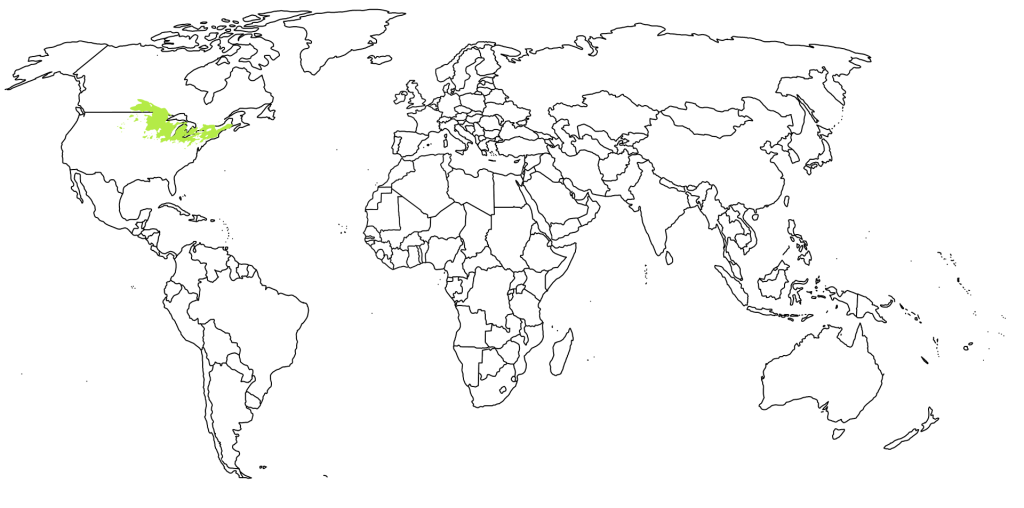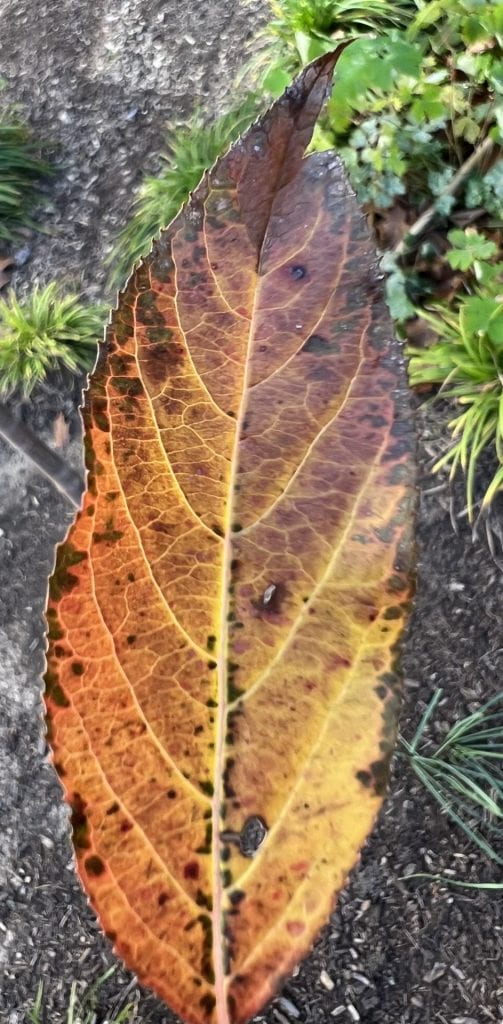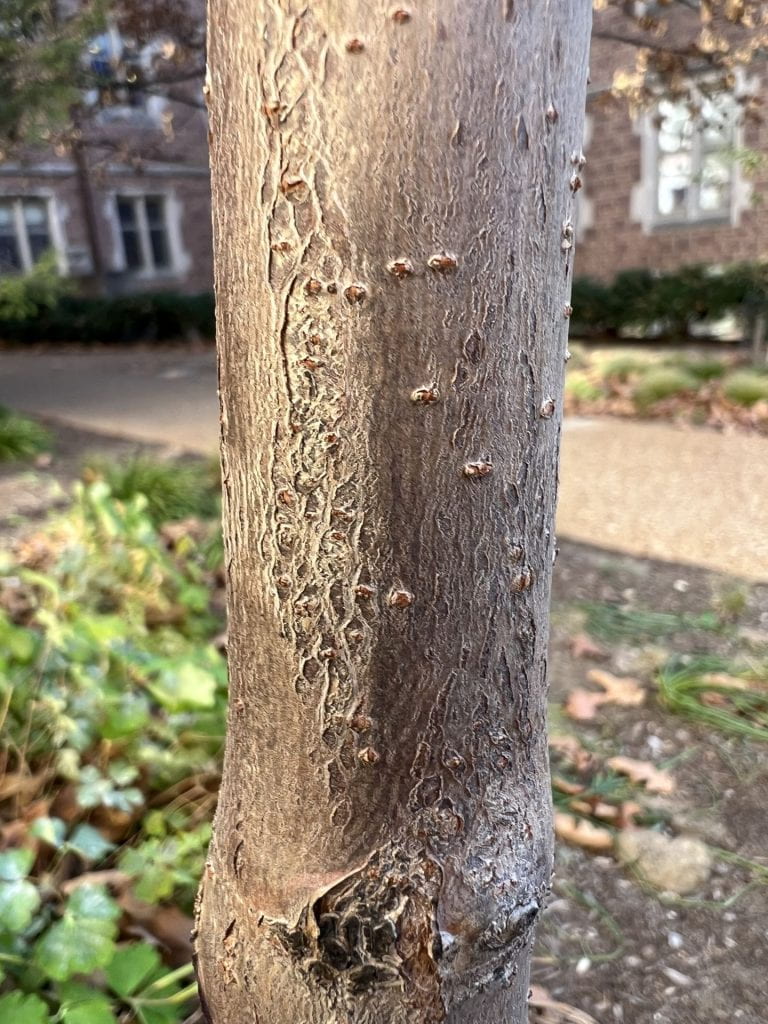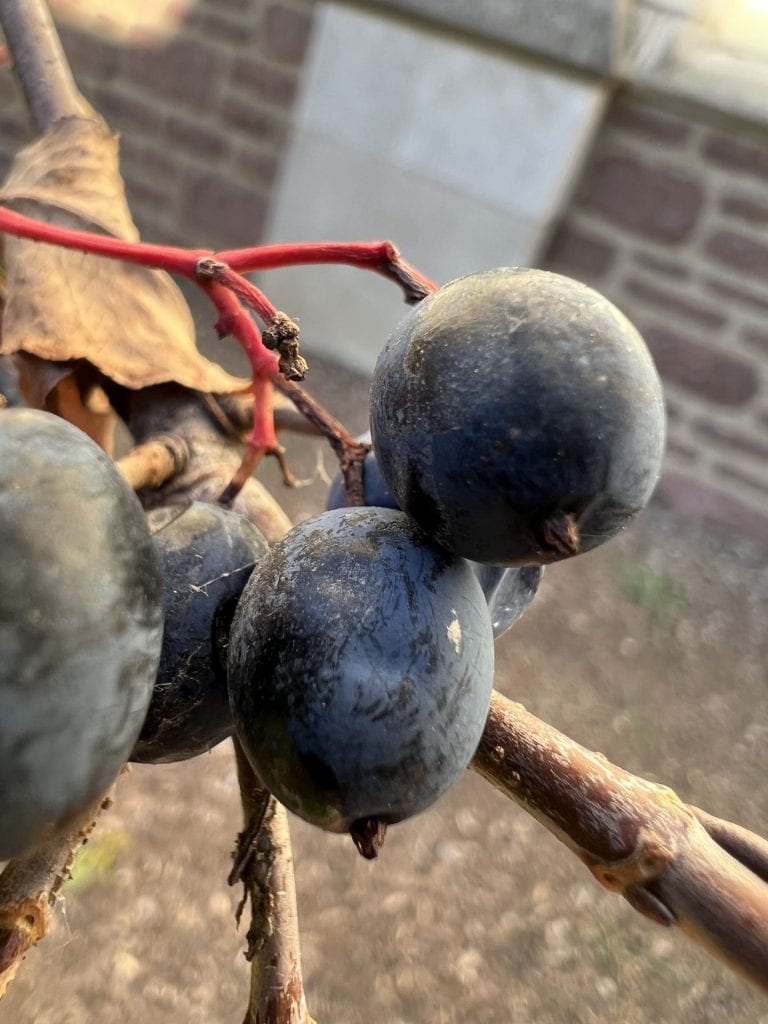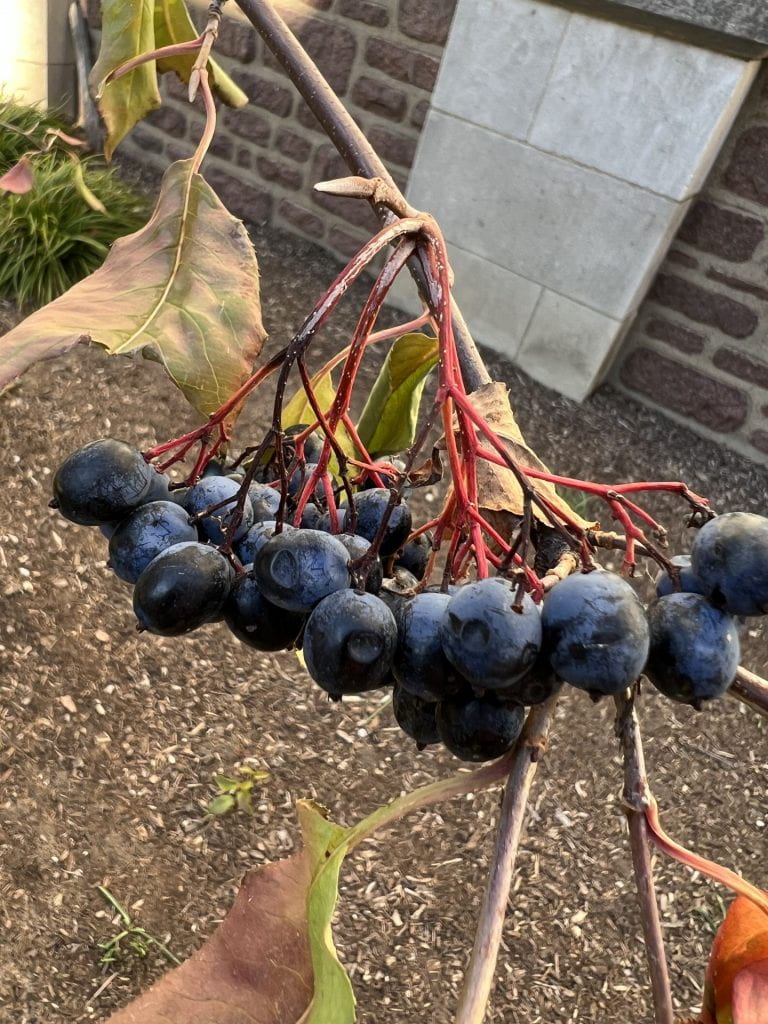Nannyberry Viburnum
Arbor Walk #133
The Nannyberry Viburnum features edible berries that persist in winter and abundant white flowers. It is a tall shrub or small tree, reaching about 15′ in height as a multi-stemmed shrub, or pruned into one trunk up to 30′.
St. Louis is at the very southern extreme of this tree’s range, which stretches across the northern United States and south-central Canada. In these colder temperatures, the Nannyberry Viburnum succeeds in dispersal by making its fruit accessible to wildlife during sparse winters.

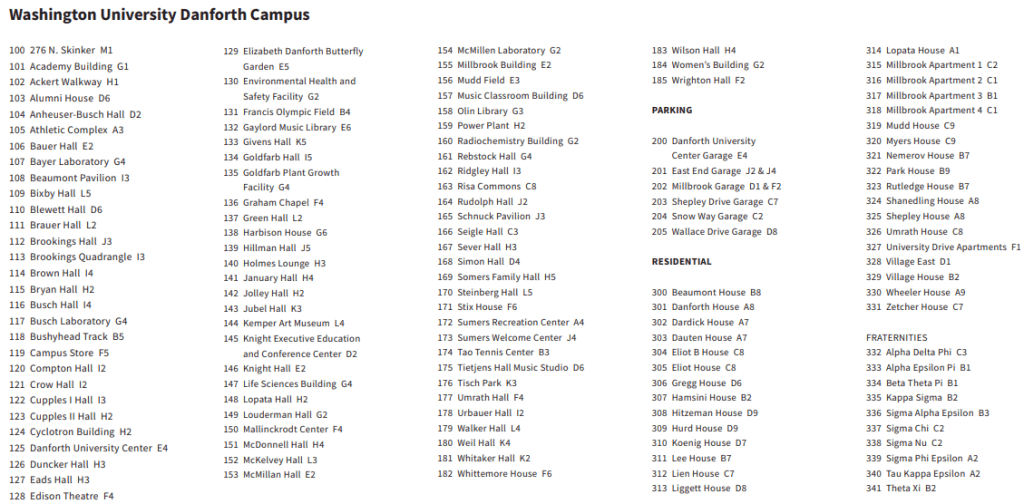
GPS Coordinates
N/A
Percent Concrete
N/A
Distance to Buildings
| Year | Close Building #1 | Close Building #2 | Close Building #3 |
|---|---|---|---|
Distance to Other Species
| Year | Close Species #1 | Close Species # 2 | Close Species # 3 |
|---|---|---|---|
Standard Measurements
| Year | Height (m) | DBH (cm) | Crown Diameter N-S (m) | Crown Diameter E-W (m) | Average Crown Diameter (m) |
|---|---|---|---|---|---|
| 2023 | 3.52 | 2 | 1.45 | 1.61 | 1.53 |
| 2024 | 3.86 | 3 | 2.16 | 2.2 | 2.18 |
Nests and Pests
| Year | Description |
|---|---|
| 2023 | N/A |
Leaf Identification
The leaves of the Nannyberry Viburnum are 2″ to 4″ long and have a shiny dark green color on top. The underside of the leaves are typically paler with small black dots. The leaf shape is ovate to elliptical with a serrated margin. The venation is almost arcuate to arcuate. The petiole is reddish, and it has opposite arrangement.
Twig and Bud Identification
The twigs of the Nannyberry Viburnum are gray, and the new growth is typically reddish-brown. The buds are slender, valvate (having only two bud scales), and pinkish brown. The flower buds are very similar but swell at the base.
Bark Identification
The Nannyberry Viburnum bark on young trees is smooth. It gains irregular scales with age.
Fruit Identification
The fruit of the Nannyberry Viburnum are dark blue drupes (seed covered by fleshy mesocarp) that are about 1/2″ long. They grow in hanging clusters on a red peduncle (flowering or fruiting stem). The fruits are edible when ripe.
Flower Identification
The Nannyberry Viburnum flowers are small and white. They occur in round-topped clusters. The flowers bloom in mid-spring.

